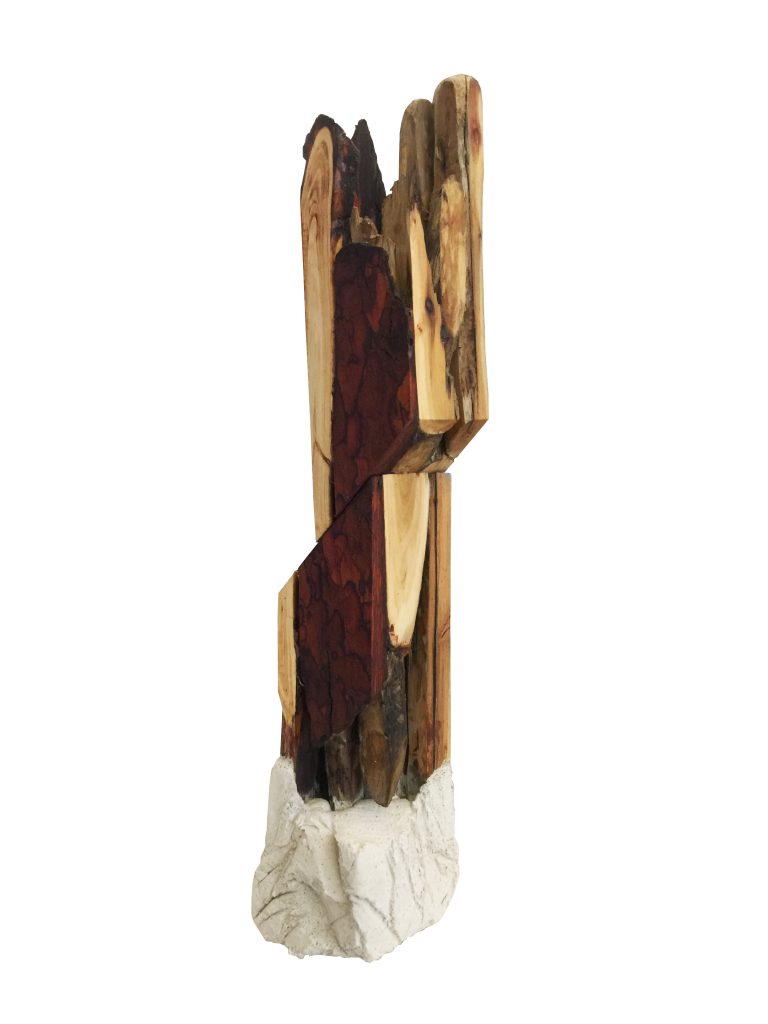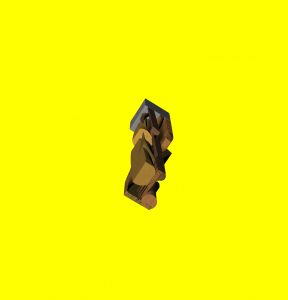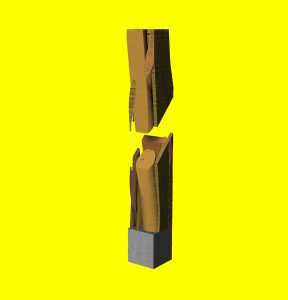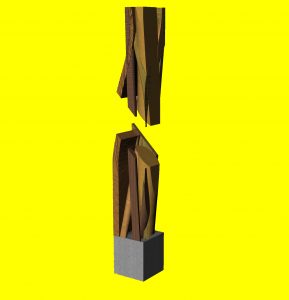by Laurence Crouzet
Engineered Drift Wood Product

The treatment of drift wood as a new engineered process to increase durability & strength
not all EDWP* is created equal
*Engineered DriftWood Product
This sculpture investigates the possibility of using driftwood as an engineered wood product, as its been processed by nature to enhance its primal qualities. After being cut, soaked, salted, baked and dried, wood becomes driftwood. After being brushed, sanded, assembled, glued, levelled, sanded again and finally, varnished, driftwood becomes EDWP. The end product is an ecological alternative exploiting the density, strength, flexibility and grain of different species.
EDWP rode upon currents, drifted outside the bounds of human industries and suggested an alternative path of movement around the construction world; a system whose scale and complexity remains beyond the control of abstract human decisions, yet continues to shape the environment we inhabit.
more info
on the theoretical framework?
// read this //
The value of driftwood for construction is influenced by geographic location, local economics, individual and cultural preferences, as well as physical characteristics and post-drift condition of the wood. Its value for other purposes is although very broad. Amongst other things, while drifting, the wood offers shelters to small animals and releases tannins to create food for small organisms. Thus, even on its journey through currents and flows, driftwood acts as a habitat for beings.
VALUE
As for its condition and quality in construction, it varies according to when the tree fell, how long it spent in the water, and how often it was stranded and experienced wetting and drying cycles. Construction workers on the coastline of Alaska believe this process makes driftwood a harder wood: “They’re harder than normal because of water and then they get wet and dried up, then get wet and dried up again.”1 Indeed, water transport of timber and water immersion or spraying for conservation and controlled drying purposes have consequences on the physical and chemical structure of the wood.2 The quality of a log will also depend upon the species, its buoyancy, its resistance to decay, the conditions under which it grew and other condition of the wood upon entry into the water. Studies of wood immersed in water for long periods of time have shown that it becomes more permeable, which helps with its seasoning.3
QUALITY
Not all EDWP* is created equal furthermore explores architectural issues raised by increased global mobility. The sculpture establishes a fictional context that highlights key concepts critical to understanding theimpact of the movement of people, objects and ideas.
The vagabondage of materials enables the construction of structures and thus communities, in remote locations.
“Migrations are constantly on the increase, and forecasts for the coming decades indicate they may eventually involve as many as a billion people trees. (…) Considering the growing ease of transportation and the gradual reduction in the limits of time and geography, this type of movement seems set to become a permanent part of life for a larger and larger proportion of the world’s population construction materials.”4
1. Alix & Brewster, Wood Use and Value Along the Yukon and Kuskokwim Rivers, Alaska, Alaska Journal of Anthropology Volume 2, Numbers 1 – 2, 2004. p.52.
2. Idem.
3. Ibid, p.58.
4. Borasi. Journeys: How travelling fruit, ideas and buildings rearrange our environment. Canadian Center for Architecture, Montreal, 2010. p.290.



